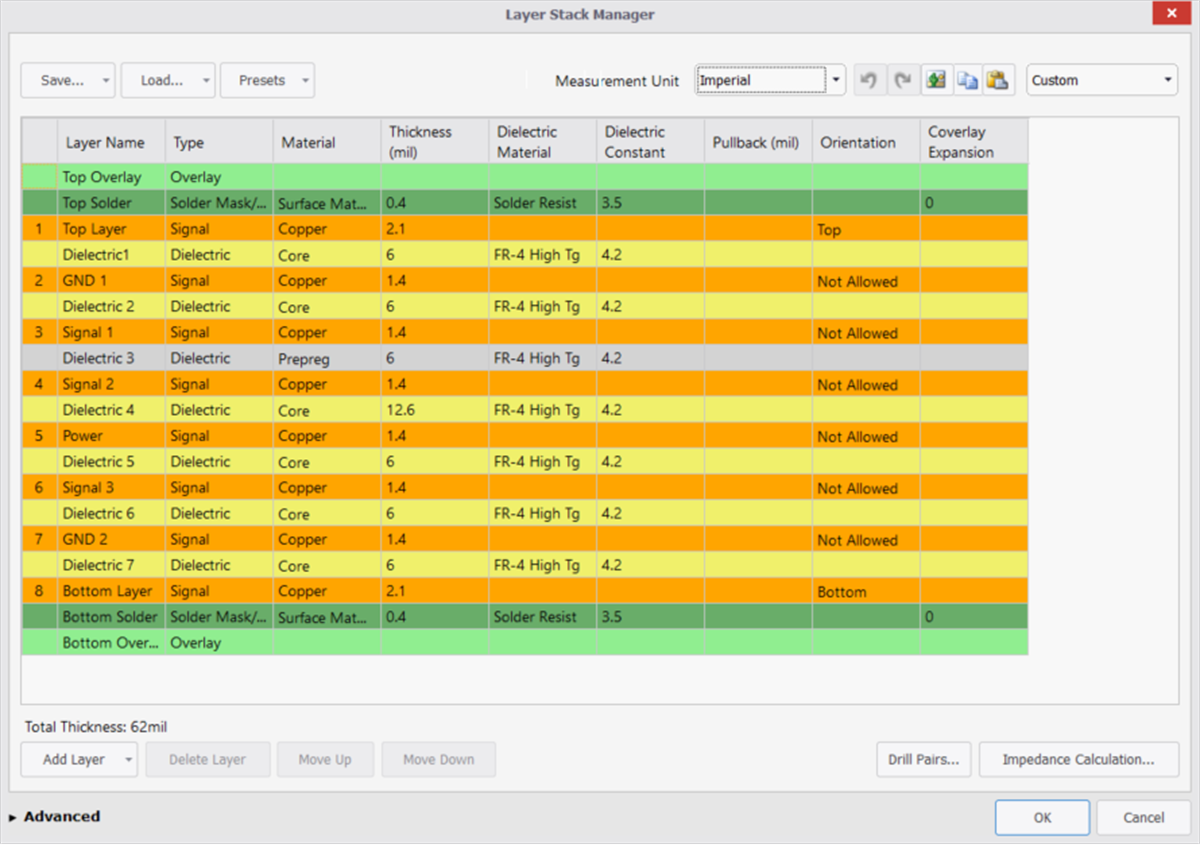TIDUBF0 January 2022
- Description
- Resources
- Features
- Applications
- 5
- 1System Description
- 2System Overview
- 3Hardware, Testing Requirements, and Test Results
- 4Design and Documentation Support
- 5Tools and Software
- 6Documentation Support
- 7Support Resources
- 8Trademarks
4.1.3.5 PCB Layer Stackup Recommendations
Figure 4-2 shows the 8-layer stackup used for the PMIC and serializer board. Two signal layers are required due to the complex routing requirements introduced by the small size requirements of the PCB that must include I2C, logic IOs, clock, and control signals between the PMIC, serializer, and imager. The separation of the outer layers is selected to ensure a characteristic impedance of 50 Ω, ±10%
In this design, high current components are placed on both the top layer and the bottom layer, so Layer 2 and Layer 7 in the stackup are dedicated ground planes to minimize high current return paths. A separate AGND plane is also included on Layer 7 for the imager.
 Figure 4-2 Layer
Stackup
Figure 4-2 Layer
Stackup